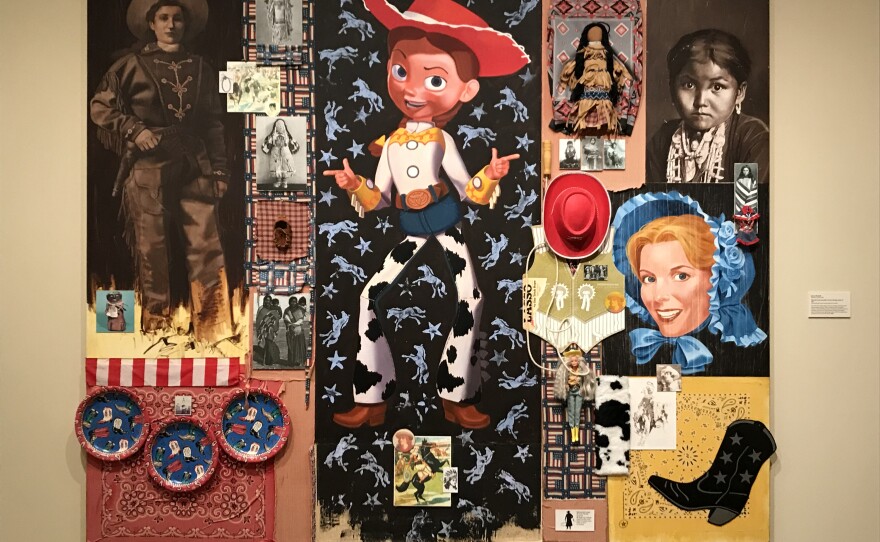The number of privately owned art museums around the world is booming, with wealthy individuals opting to open their own museum rather than donate to an existing gallery.
This growing trend is evident in some new museums in downtown St. Petersburg, where much has changed in the city’s art scene since visitors started walking the halls of the Museum of Fine Arts in 1965.
The MFA, a "public" museum, gets some government money and has to meet certain legal and ethical standards. It also offers a comprehensive collection ranging from ancient mosaics to contemporary photography.
“A little bit for everyone,” said spokeswoman Julie Wilson. “No matter what you like you can find something here.”
But the latest wave of museums to open in the city are privately-owned and niche, focusing on one artist or artistic-style.
One example is the Tom and Mary James Museum of Western and Wildlife Art, which opened in April. The former chairman of Raymond James Financial and his wife have collected about 3,000 works over the years and displayed most of them in his company headquarters. Now over 400 pieces are housed in a museum for the public.
“My kids don't want all that art,” James said during a preview of the museum earlier this year. “We solved 13 percent of the problem.”
James funded the not-for-profit museum with about $75 million of his own money. The billionaire says he was looking for a way to give back to the region where he made his fortune and spent most of his life.
“What are you going to do with money, you’re going to give it to the government?” he posed. “You’re going to spoil your kids more? I mean we're [Mary and I] 75 years-old. What are you going to do? You might as well do something that's a contribution to the community.”
That charitable spirit is what Mark Ormond, Director and Curator of Exhibitions at Ringling College Galleries in Sarasota, says usually drives collectors to open up museums. But why not just donate some of your collection to an existing institution or fund your own wing? Ormond says it's about control.
“You have a vision and you don't have to compromise that vision," he said.
Ormond says by carving their own path, private owners are free to choose what goes in their museum and how its displayed. They can make decisions without having to worry about the approval of an existing board of trustees.
“Some of them have money, some of them have power and influence – it’s very political,” Ormond said.
Ormond says wealthy art-lovers creating their own museums isn't new to Florida. The Rubell, Marguelis and de la Cruz Collections in Miami have been around since the 1990’s and early 2000’s. They are part of the reason the city ranks in the top ten globally for private museums.
Long before that in Sarasota, the owner of a certain well-known circus funded the construction of a Renaissance-style palace he called the John and Mable Ringling Museum of Art.
“That was a private museum,” Ormond said. “And then they [the Ringling’s] didn't have any children, his wife died in '29, so he left it in his will to the people of the state of Florida.”
The Ringling is now one of only three state-run museums in the country. But for people like Tom James who don't want the government involved in their legacy, Ormond says they have to make careful business decisions.
“It's very important for someone who establishes a museum or wants to upon their death to work with a very smart attorney to draw up the papers that protects the interests of that individual,” he said.
Most importantly, Ormond says they need to be savvy about who they hire to educate visitors about their collection.
“You have to be prepared to be the middle person between the art and the public,” he said.
And education could help the James Museum, which some critics have noted lacks context. What needs work, they say, is connecting the historical significance of the art depicting Native American and cowboy life.
Mark Ormond says collectors have to accept they take on a heightened accountability for their art when they put it in a museum.
“When you have it in your offices or in your home, then it's a very private experience,” he said. “But once you establish a place where anyone can come, people are going to start making comparisons to other museums or other collections. And you have to be prepared for that.”
And for competition. The best known may be the Dali Museum, which used state and local funding to bring the private collection of Reynolds and Eleanor Morse to St. Pete in 1982.
Now there's the Imagine Museum, another privately-owned venture that opened in January to highlight studio glass art.
Next year will add the Museum of the Arts and Crafts Movement, which businessman and art collector Rudy Ciccarello is funding mostly with his own money, but also with a little help from the city and Pinellas County.
Imagine Museum Deputy Director Jane Buckman says its founder, philanthropist Trish Duggan, saw what was happening in St. Pete's art scene and that's why she chose it as her museum's home.
“She saw a community that would appreciate her engagement and her investment,” Buckman said.
Buckman says she's not worried having all these museums in St. Pete will over-saturate the market. She sees it as an opportunity to lift all boats.
WUSF is infusing a little art in our news with an occasional series called “Art Populi.” This time around, we feature museums around the Tampa Bay area. Florida Matters is highlighting the series on this week’s episode.











